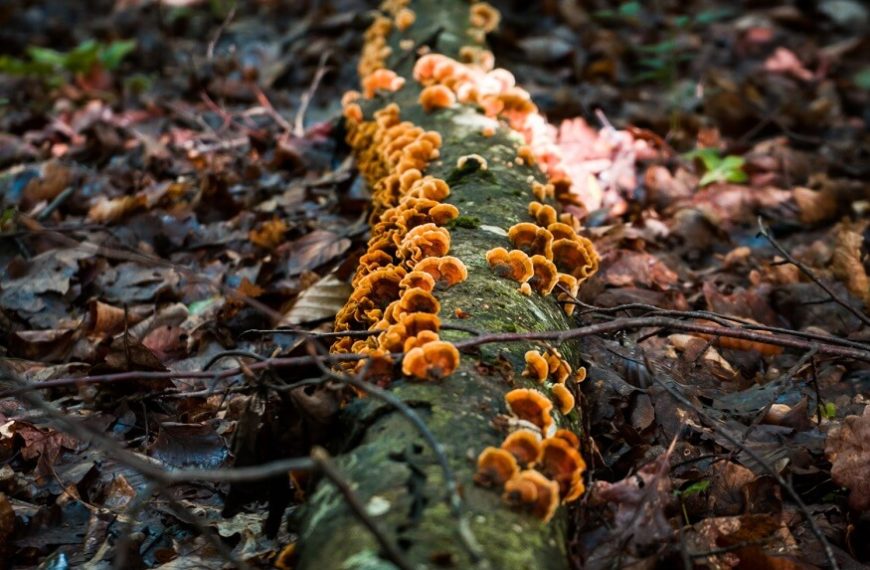Fungi are a diverse and fascinating group of organisms that inhabit our planet and play a crucial role in our ecosystem. They have some unique characteristics that make them stand out.
What are fungi?
Fungi are a group of living organisms that are different from the plants and animals that we see around us. They belong to their very own kingdom, called the “Fungi Kingdom.” Here are some basic points to help you grasp the working of fungi.
- Not plants or animals: While some fungi might look like plants in some way, they are different because plants make their own food through photosynthesis unlike fungi. Fungi also differ from animals because they do not move around.
- Mushrooms, Yeast, and more: Fungi come in various forms and sizes. They can vary from the mushrooms we see in the woods, to the yeast that is used in baking and brewing. Some fungi also live inside organisms.
- Decomposers: Fungi are decomposers. They maintain the ecosystem balance by decomposing dead plant and animal matter back to the ecosystem as nutrients.
- Medicinal use: Some fungi have medicinal use. Some are also used to make antibiotics.
Classification of fungi
Classification of fungi is made based on the characteristics of fungi and their reproductive manners. Here are the primary groups of fungi:
- Zygomycetes: Commonly found in some soil, decaying matter, and some plant pathogens. These fungi reproduce by creating a thick-walled structure called a zygospore.
- Ascomycetes: They have a sac-like structure called asci that contain spores. Many familiar fungi fall under this category like morels, truffles, and baker’s yeast.
- Basidiomycetes: These fungi have club-like structures called basidia where spores develop. Some iconic mushrooms like the fly agaric fall under this category.
- Deuteromycetes: They are called the “imperfect fungi” because they do not have a known reproductive stage. They include fungi like Penicillium, which produces the antibiotic penicillin.
- Glomeromycetes: These fungi form a symbiotic relationship with plant roots, helping in nutrient absorption. They help keep the ecosystem balanced.
- Chytridiomycetes: These are unique aquatic fungi with a unique life cycle. Some of them are responsible for diseases in amphibians.
Types of fungi
There are fungi of different shapes, sizes, and functions. Here are some of the different types of fungi that you might encounter:
- Mushrooms: This is the most recognisable type of fungi. Mushrooms come in a wide range of shapes and colours, and while some are edible, some are poisonous.
- Yeast: Yeast is a type of fungi used in baking bread and in brewing to ferment sugars into alcohol.
- Moulds: Molds are often seen growing on food. They can thrive in various environments. Some moulds are used to make delicious cheeses like blue cheese.
- Lichens: These are unique organisms formed from a partnership between fungi with algae or cyanobacteria. They grow on rocks, trees, and ground.
- Rusts and Smuts: These fungi are known for causing diseases in plants. They can be a significant agricultural pest by harming crops production.
- Truffles: They are a type of underground fungi known for their strong and distinctive aroma. They are highly priced in gourmet cuisines.
- Mycorrhizal Fungi: These fungi have a mutually beneficial relationship with plants. These fungi help plants absorb water and nutrients, and in turn receive sugar from plants.
Fungi information
Lastly, here are some fungi information as fun facts:
- Hidden network: Fungi form a vast network underground made up of tiny threads called mycelium. They can stretch for miles in order to absorb water and nutrients.
- Mould: Mould is a type of fungi that can grow on damp environments like food and start to break them down.
- Hallucinations from ingestion: Some mushrooms can cause hallucinations when ingested. Some can be poisonous too to the point of fatality.
- Goodness of yeast: Without yeast fungi, we would not have the fluffy breads we eat.
- Mycologist’s job: A scientist who studies fungi is called a mycologist. They explore the Fungi Kingdom, discovering new fungi and helping in ascertaining their role in nature and the ecosystem.
Understanding fungi is not only informative but interesting. Fungi is crucial in keeping the ecosystem in balance. So, the next time you see a mushroom in the woods, or enjoy eating a freshly baked loaf of bread, remember that fungi are all around us, creating magic in nature’s scheme of small and grand things.
For more informational blogs, visit EuroKids!
















